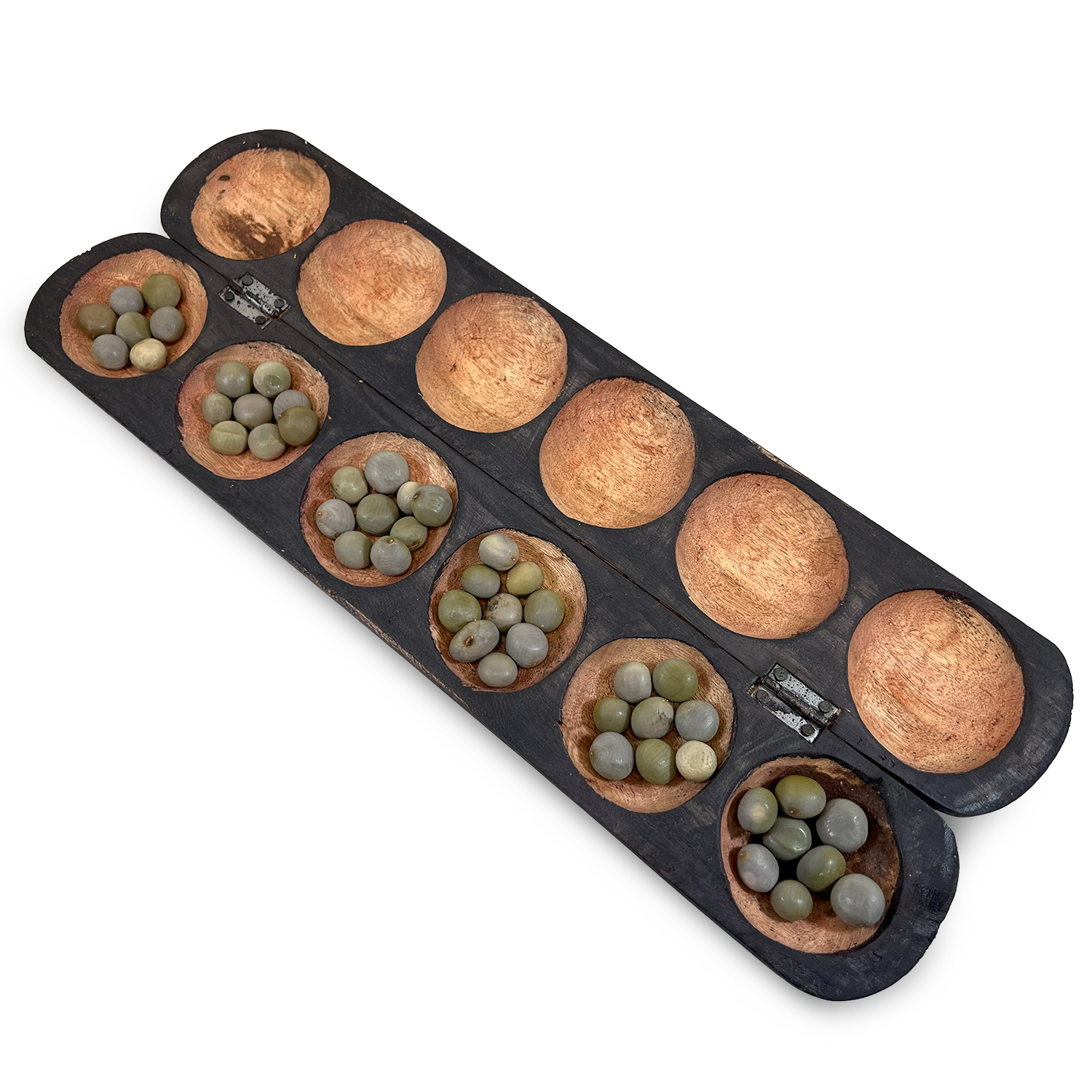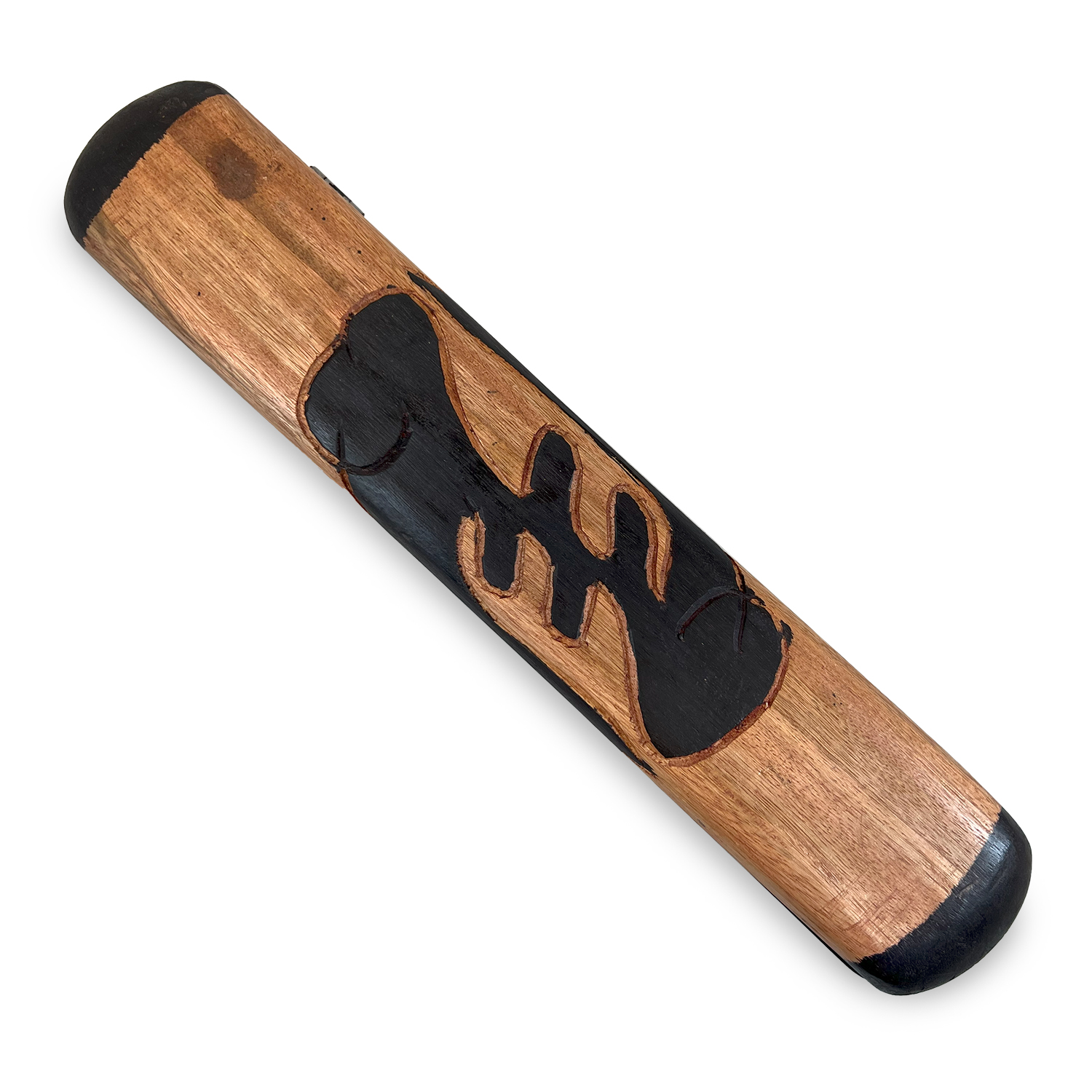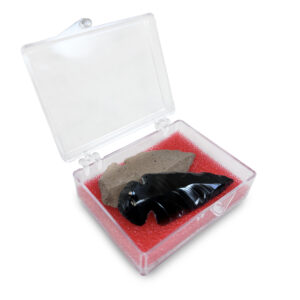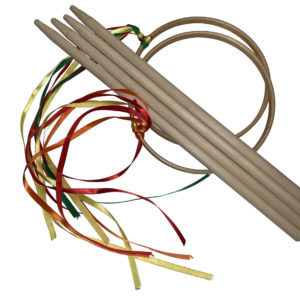Description
Mancala is a game that dates back to the 6th century AD, and has many different names all over the world. In West Africa it is known as Oware, Warri, Awale, and Awele. In Angola it is called Kiela. Before wooden boards and marbles became more commonplace, Mancala was played using holes dug into the ground or beach, and anything from stones to seeds to sea shells were used as game pieces.
Though names and rules vary, the object of Mancala is that each player attempts to collect as many game pieces (seeds) as possible before the other player clears their pits of seeds.
This mancala board was handcrafted in Ghana. Contains 50 seed markers and an instruction sheet. Game board folds shut for travel and storage.
How To Play:
– The Mancala board is made up of two rows of six small holes, or pits, and (traditionally) two larger holes, or mancalas, one at each end of the board. This version has each player keep a “loft” or collection of seeds outside the board on their side. The board is placed between two players with long sides facing each player. The row of six pits nearest each player belongs to him or her, as does the loft to the player’s right.
– Four seeds are placed in each of the 12 small pits.
– The game begins by picking up all of the seeds in any one of the pits on your side. Moving counter-clockwise deposit one seed in each pit, including your opponent’s, until the seeds run out. Put a seed into your own loft, if it is the sequence, but always skip your opponent’s loft. If the last seed you drop is in your own loft, you get another turn.
– If the last seed you drop is into one of your empty pits, you capture that seed and any seeds in your opponent’s pit directly opposite. All captured seeds are put into your loft. It is now your opponent’s turn.
– If the last seed drops in a pit with other seeds your turn is over and your opponent chooses the seeds from any pit on their side of the board. This continues until all six spaces on one side of the board are empty.
– The player who still has seeds on their side of the board when the game ends captures all of those seeds and adds them to their loft.
– Count all the seeds in each loft. The winner is the player with the most seeds.







